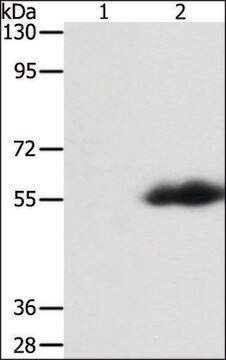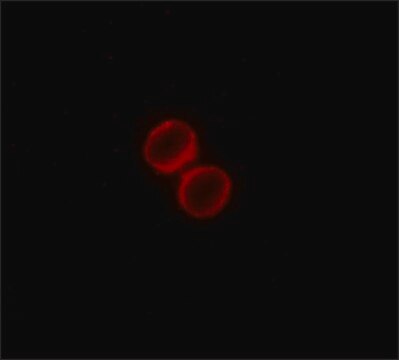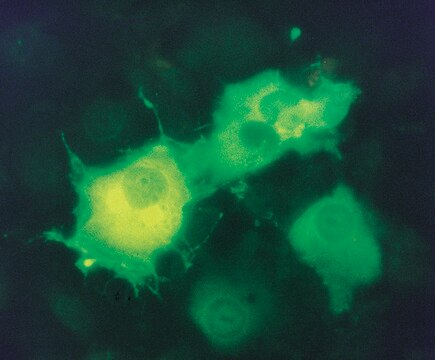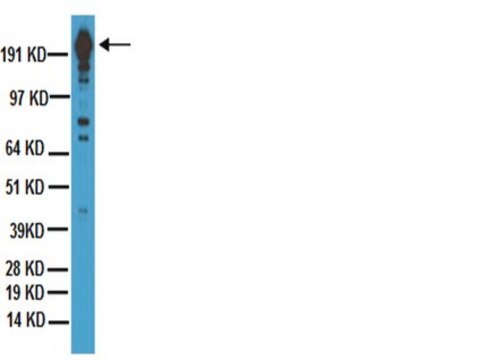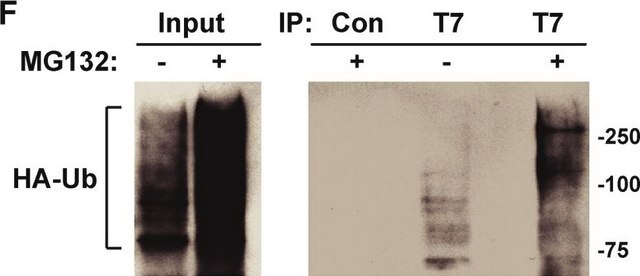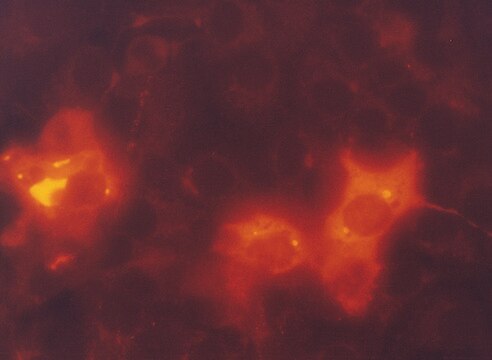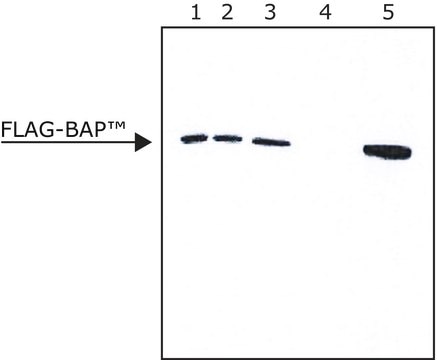F7425
ANTI-FLAG® in Kaninchen hergestellte Antikörper
affinity isolated antibody, buffered aqueous solution
Synonym(e):
Anti-ddddk, Anti-dykddddk
About This Item
Empfohlene Produkte
Biologische Quelle
rabbit
Qualitätsniveau
Konjugat
unconjugated
Antikörperform
affinity isolated antibody
Antikörper-Produkttyp
primary antibodies
Klon
polyclonal
Form
buffered aqueous solution
Speziesreaktivität
all
Konzentration
~0.8 mg/mL
Methode(n)
dot blot: 1-2.5 μg/mL
immunoprecipitation (IP): 4-8 μg using amino terminal FLAG-BAP fusion protein from E. coli crude lysate
indirect immunofluorescence: 5-10 μg/mL using 293T cells transfected with a plasmid encoding FLAG-JNK
western blot (chemiluminescent): 1-2.5 μg/mL using an E. coli periplasmic extract expressing an N-terminal FLAG fusion protein
Isotyp
IgG
Immunogene Sequenz
DYKDDDDK
Versandbedingung
dry ice
Lagertemp.
−20°C
Verwandte Kategorien
Allgemeine Beschreibung
Immunogen
Anwendung
Weitere Produktinformationen finden Sie in unserem FLAG® Literatur-Portal.
Biochem./physiol. Wirkung
Physikalische Form
Angaben zur Herstellung
Rechtliche Hinweise
Sie haben noch nicht das passende Produkt gefunden?
Probieren Sie unser Produkt-Auswahlhilfe aus.
Lagerklassenschlüssel
12 - Non Combustible Liquids
WGK
WGK 2
Flammpunkt (°F)
Not applicable
Flammpunkt (°C)
Not applicable
Analysenzertifikate (COA)
Suchen Sie nach Analysenzertifikate (COA), indem Sie die Lot-/Chargennummer des Produkts eingeben. Lot- und Chargennummern sind auf dem Produktetikett hinter den Wörtern ‘Lot’ oder ‘Batch’ (Lot oder Charge) zu finden.
Besitzen Sie dieses Produkt bereits?
In der Dokumentenbibliothek finden Sie die Dokumentation zu den Produkten, die Sie kürzlich erworben haben.
Kunden haben sich ebenfalls angesehen
Verwandter Inhalt
Protein and nucleic acid interaction reagents and resources for investing protein-RNA, protein-DNA, and protein-protein interactions and associated applications.
Unser Team von Wissenschaftlern verfügt über Erfahrung in allen Forschungsbereichen einschließlich Life Science, Materialwissenschaften, chemischer Synthese, Chromatographie, Analytik und vielen mehr..
Setzen Sie sich mit dem technischen Dienst in Verbindung.

